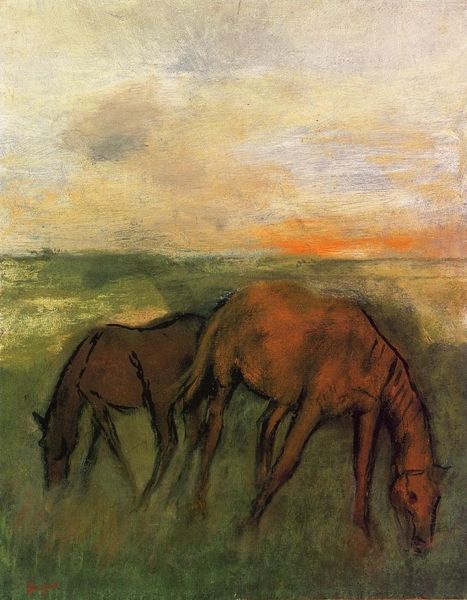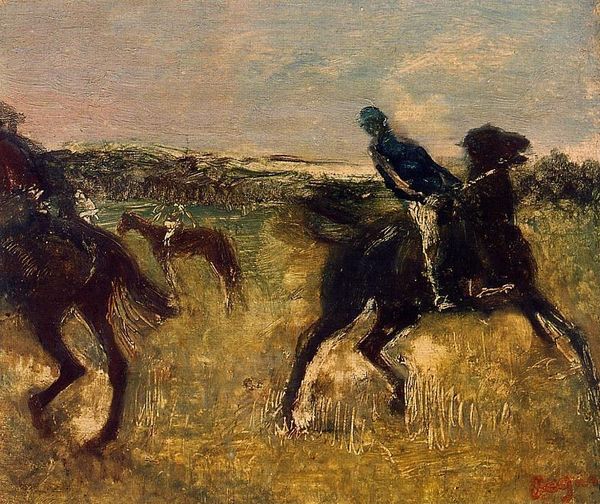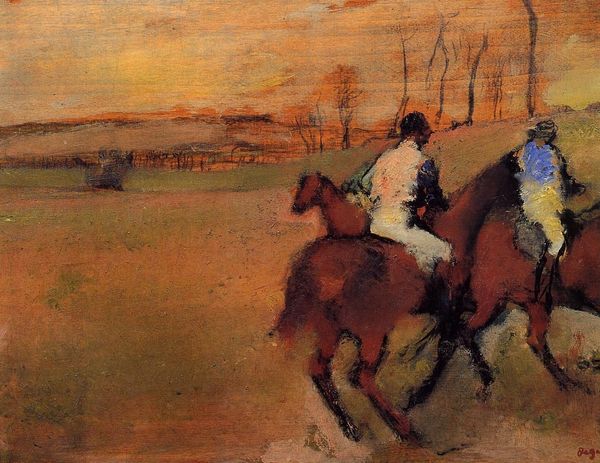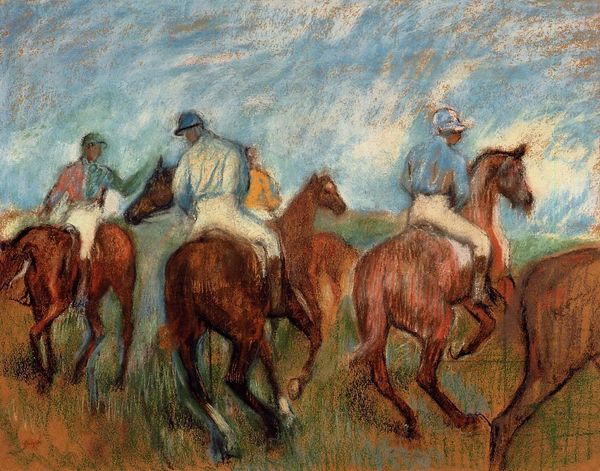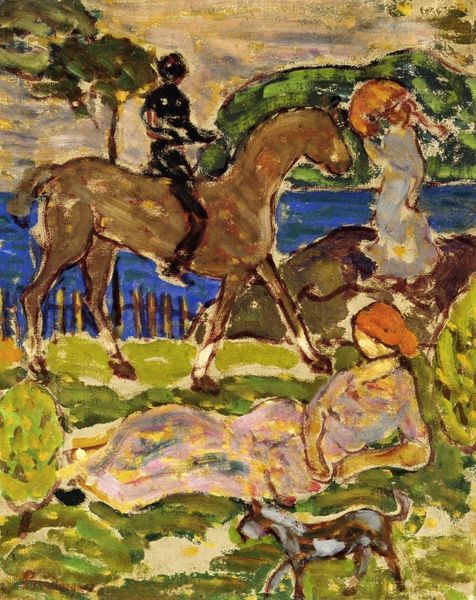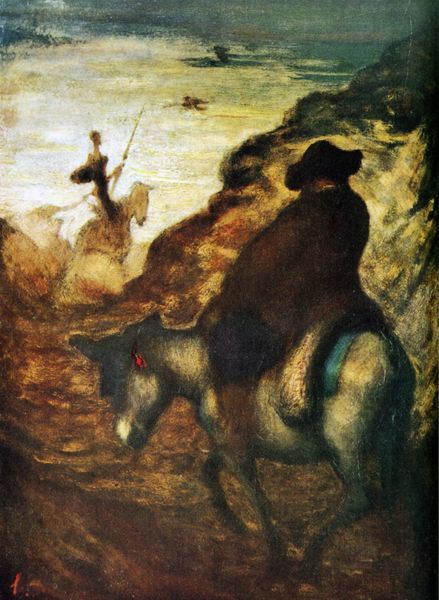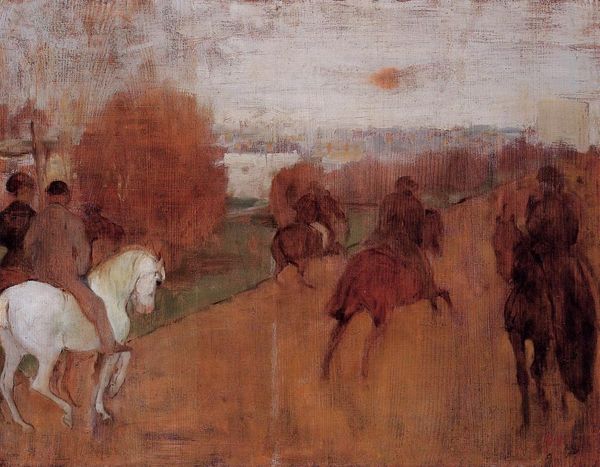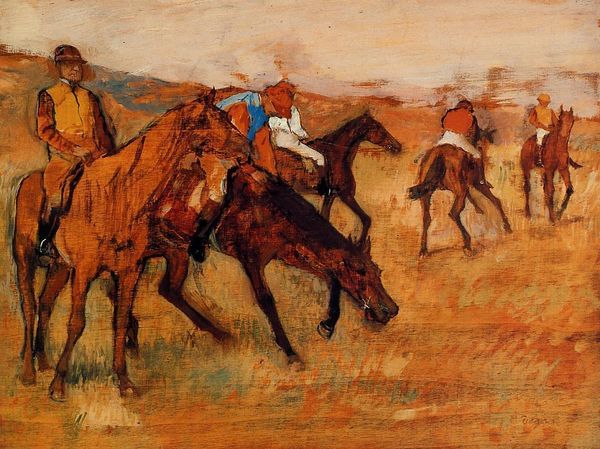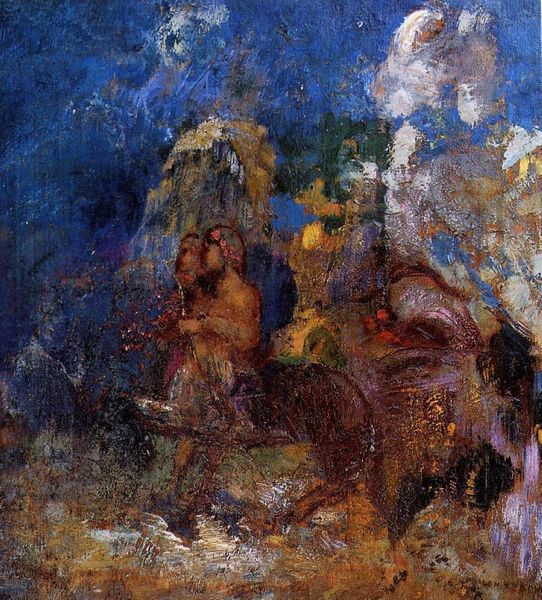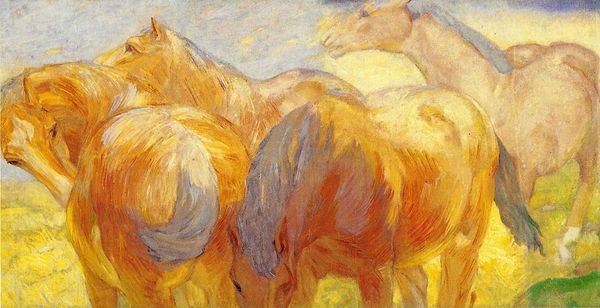
Dimensions: 55 x 46 cm
Copyright: Public domain
Curator: Henri de Toulouse-Lautrec's painting, "Horsewoman and Dog," created in 1899, presents an interesting snapshot into leisure activities of the French elite. It is oil on canvas and currently in a private collection. Editor: It's captivating, really. My first impression is a sense of energetic movement. The colors are muted, almost earthy, but the way the scene is rendered gives the feeling of speed, wind, and freedom. Curator: Precisely. Lautrec was keen on portraying modern life, and equestrian pursuits were certainly part of the social fabric of the wealthy. This work allows us to analyze class and gender through the lens of leisure. The horse, the dog, they all become signifiers. Editor: I see that. The confident posture of the rider suggests social power. And is it just me, or is there a slight melancholy feel as well? Despite all the implied movement, the landscape feels a bit desolate, perhaps hinting at the alienation inherent in these displays of status. Curator: That's astute. Lautrec often imbues his subjects with complexity, defying easy readings. The Impressionist style, the loose brushwork, might contribute to that feeling. It emphasizes fleeting moments but also a certain lack of definition, a lack of permanence. He also paints the darker aspects of the wealthy here and what hides behind those frivolous scenes. Editor: It reminds me that these seemingly simple images are loaded with context. Consider the societal norms restricting women's roles, even within privileged circles. Riding was an acceptable activity, a performance of a particular kind of femininity but maybe within a frame. Curator: Absolutely. This work offers us a rich understanding of the intersections between class, gender, and the visual language of status in late 19th-century France. It serves as an invitation to delve into the public image of elites, and how art creates and reflects power. Editor: A truly compelling scene. Makes you wonder what else might lie beneath the surface. I feel as though I can explore social dynamics and how they shaped individuals of the past, too.
Comments
No comments
Be the first to comment and join the conversation on the ultimate creative platform.
